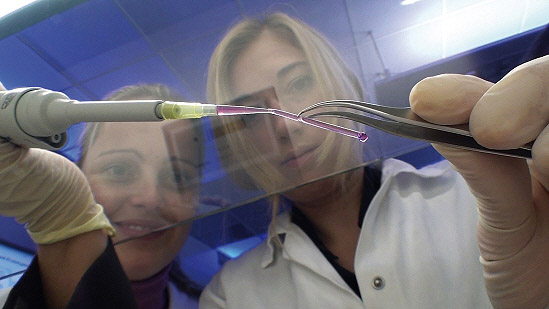3D printing blood vessels

© Fraunhofer IGB
At TEDMED 2009, Dr. Anthony Atala, the director of the Wake Forest Institute for Regenerative Medicine, showed a new type of technology to print a kidney-shaped mold. During his 18-minute talk, he explained how one day this technology might be used to print actual organs. Unfortunately at the time, most press and media didn’t completely get the point and started reporting about “the world”s first 3D printed kidney”. Although we are a long way from applying this to patients, the technology shows promise.
Also in 2009, 5 Fraunhofer-institutes in Germany joined forces to come up with bio-compatible artificial blood vessels. Two years later, the German scientists say they”re building a 3D printer that can print out artificial blood vessels. Through their BioRap project the Fraunhofer team says, they expect to be able to supply artificial tissue and possibly even complex organs.
So far, a major stumbling block in tissue engineering, was the inability to supply artificial tissue with nutrients that have to arrive via capillary vessels . The Fraunhofer team now claims to have solved that problem by combining 3D printing and a technique called multiphoton polymerization.
Project leader Dr Günter Tovar, of the Fraunhofer Institute for Interfacial Engineering and Biotechnology believes the technique could be used to build up completely artificial organs based on a circulation system with blood vessels created in this fashion to supply them with nutrients.
3D printing of blood vessels or tissue in general could one day soon have a huge impact on people’s lives. In his talk, Dr. Atala mentioned the shocking fact that, every 30 seconds a patient dies from diseases that could be treated with tissue regeneration or replacement. Even if we won”t be able to create life-saving organs in the near future, 3D printing tissue only could save many lives.
Dr. Tovar and his team are exhibiting their findings at the Biotechnica Fair that will be taking place in Hannover, Germany on October 11-13.
If you”d like to read more about this rather complex matter, please take a look at this BBC article.
And here”s Dr. Anthony Atala’s talk once more:
Recommended Articles
No related posts.


